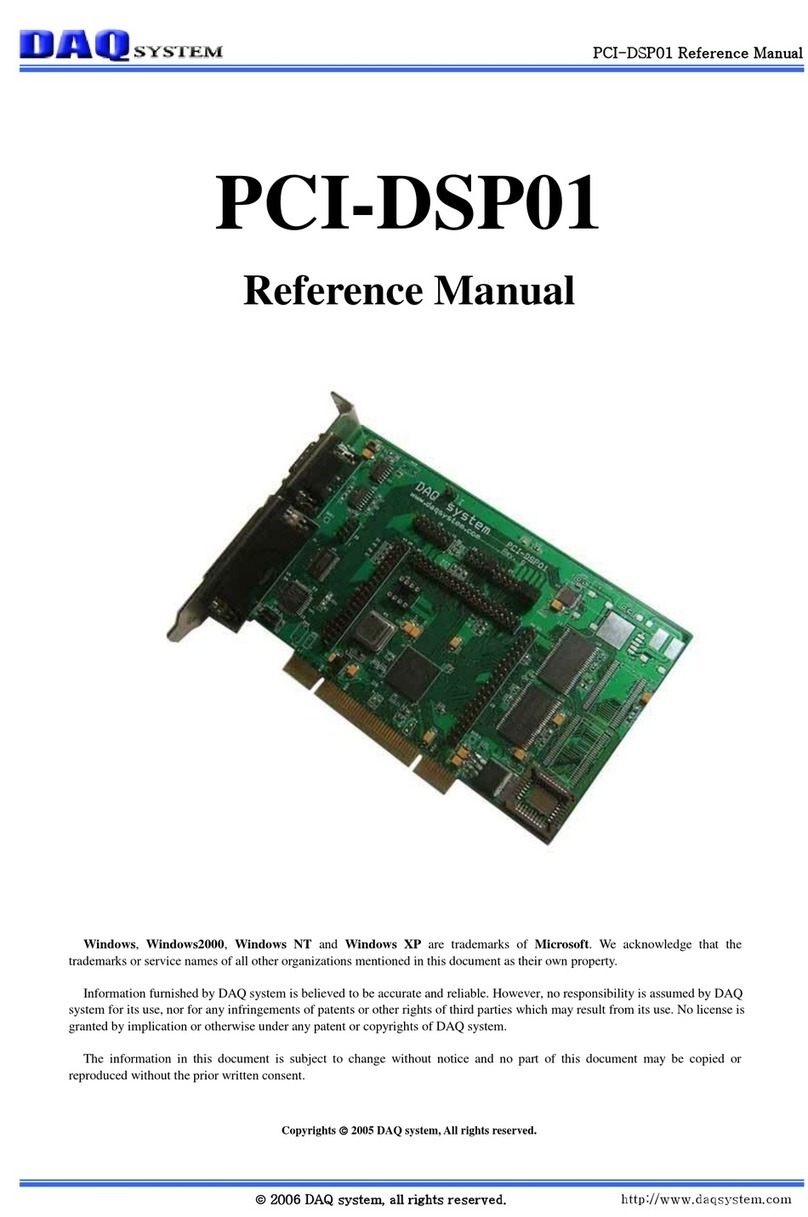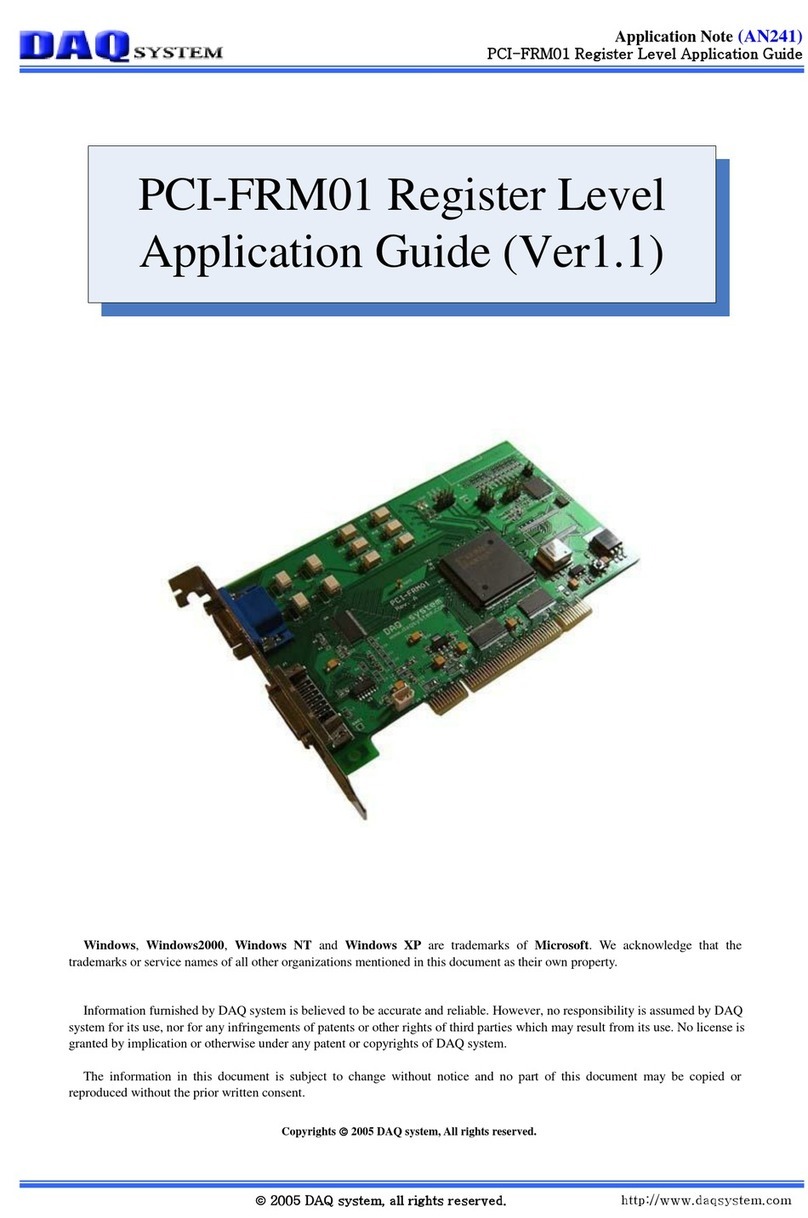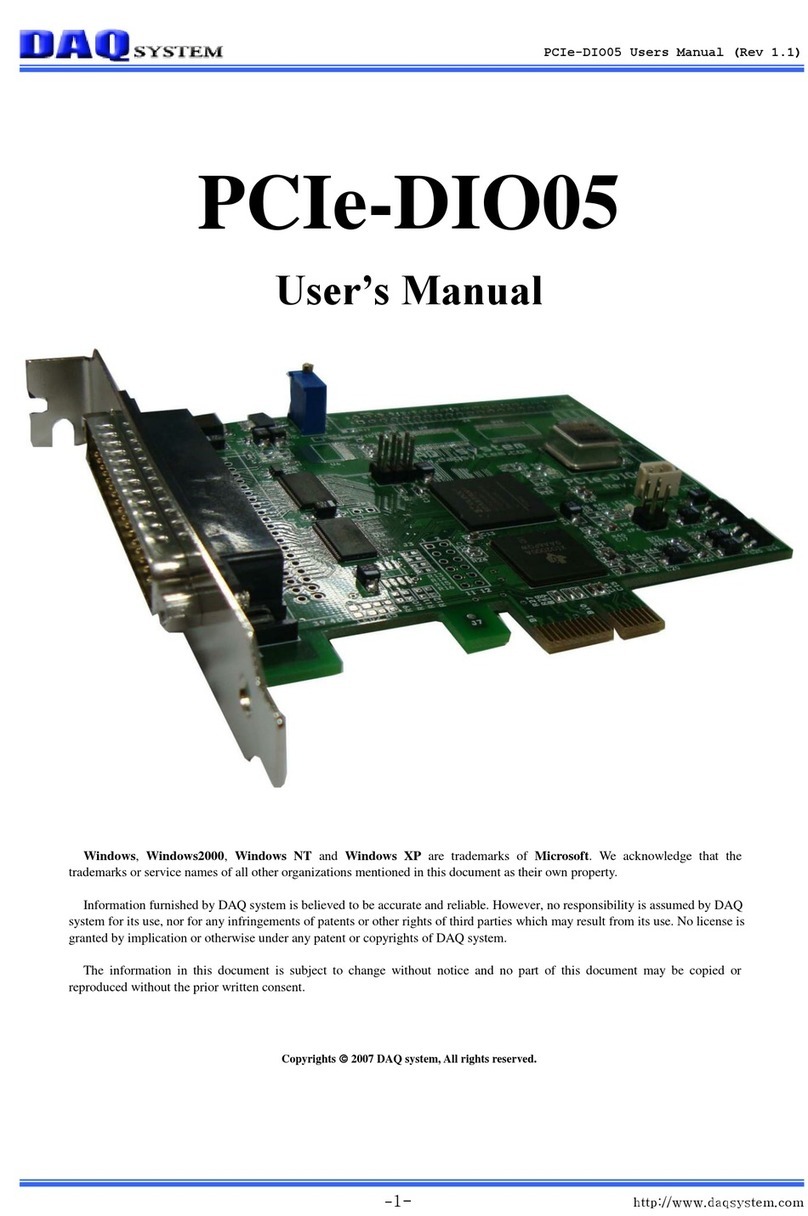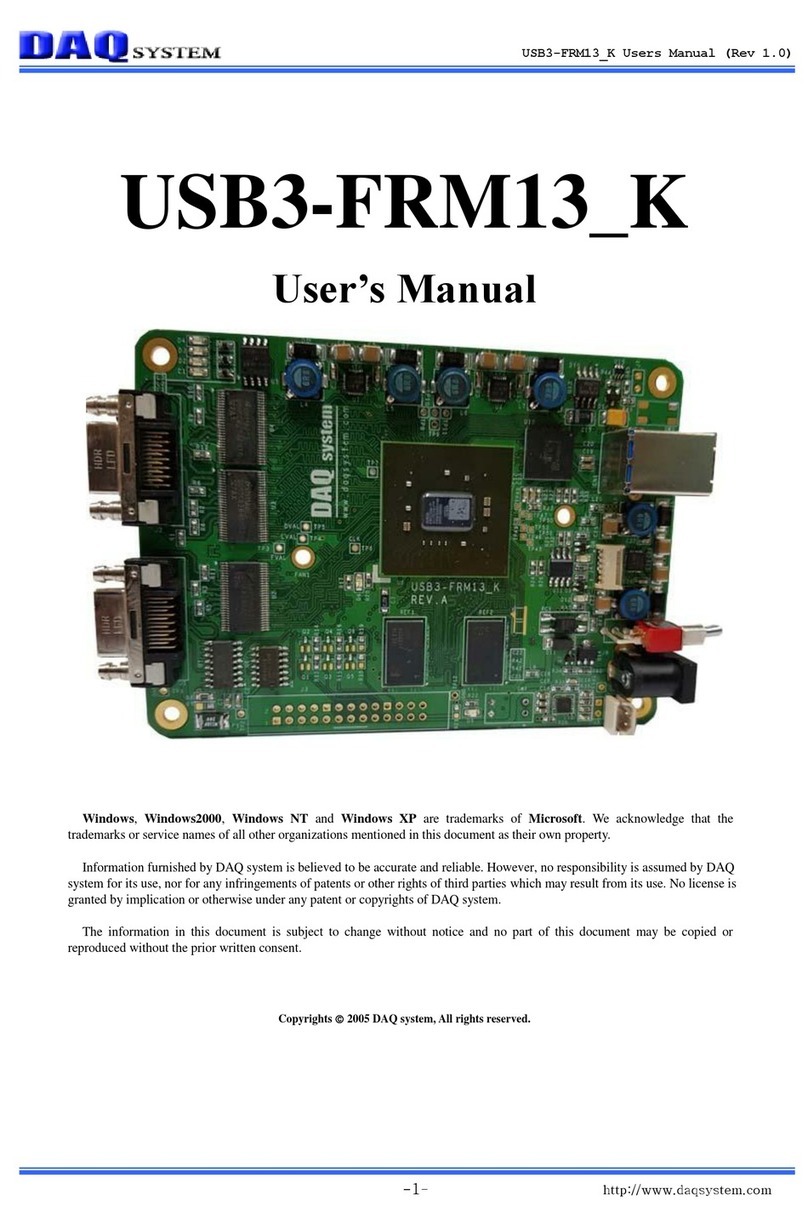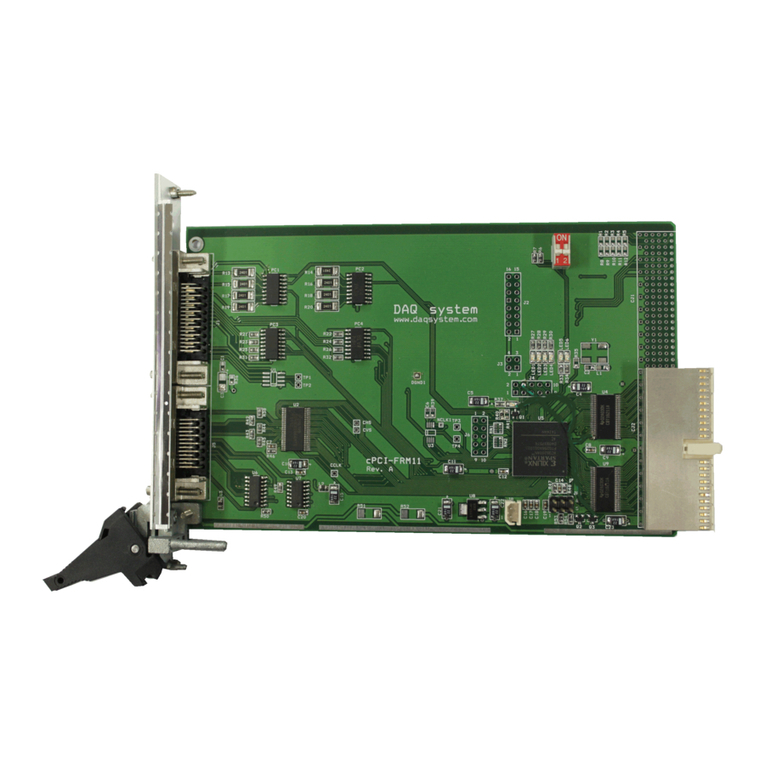
PCI-EK01 Users Manual (Rev 1.0)
-4- http://www.daqsystem.com
Very flexible to upgrade because of FPGA is used as PCI bridge and
overall board
12bit resolution/ 8 Single ended or 4 differential input
0 to +3.3V, ±1.65V input range/ MAX 200Ksps(5uSEC) conversion
time
Can change sampling interval in auto scanning mode by 2.5uSEC
increment
Power on auto-calibration/ ±1 (LSB) INL/DNL
±1uA analog input leakage current/ 20pF analog input capacitance
On-board 1024 x 16 data FIFO/ On-board 256K(type A) x 16 data
SRAM
12bit resolution/ 4 channel output/ 0 to +3.3V output range
MAX 1M (1uSEC) update rate
Can change update interval in waveform generation mode by 1uSEC
increment
Simultaneous update of outputs
±16 (LSB) INL/ ±1 (LSB) DNL/ ±3 (LSB) Offset error/ Slew Rate
0.7V/usec
On-board 1024 x 16 waveform generation dual-port RAM
On-board 82C55 chip/ 24bit general purpose I/O
Three 8bit group(Port A/B/C)/ 3.3V CMOS logic level
Port B has high current sink capability (max 500mA)
32-bit Timer/ 32-bit Counter
Input frequency max 60Mhz/ 25n timer resolution
One-shot or alternate timer output mode/ 3.3V CMOS logic level
Windows 2000/XP/Windows 7
Kernel mode WDM Driver/ User mode DLL
Test Application(Waveform Generator, Waveform Display)






